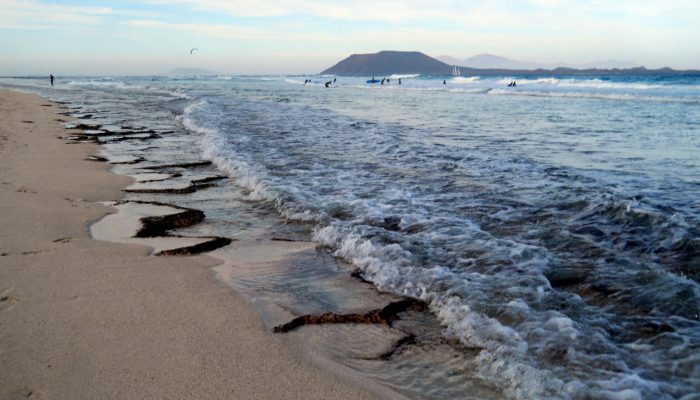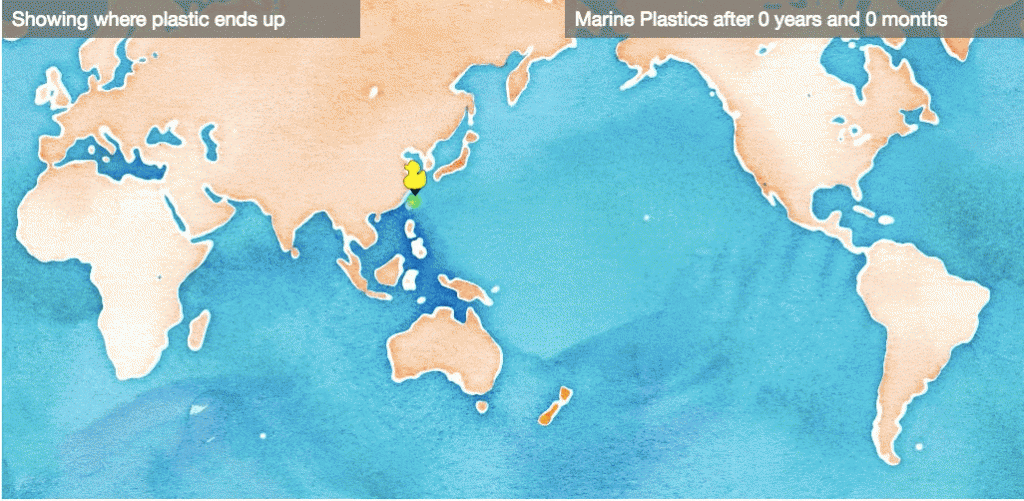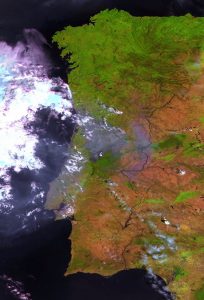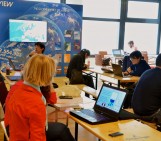
Drawing inspiration from popular stories on our social media channels, as well as unique and quirky research news, this monthly column aims to bring you the best of the Earth and planetary sciences from around the web.
Major Story
With June being the month when the world’s oceans are celebrated with World Ocean Day (8th June) and the month when the UN’s Ocean Conference took place, it seemed apt to dedicate our major story to this precious, diverse and remote landscape.
In fact, so remote and inaccessible are vast swathes of our oceans, that 95% of them are unseen (or unvisited) by human eyes. Despite their inaccessibility, humans are hugely reliant on the oceans. According to The World Bank, the livelihoods of approximately 10 to 12% of the global population depends on healthy oceans and more than 90%of those employed by capture fisheries are working in small-scale operations in developing countries. Not only that, but the oceans trap vast amounts of heat from the atmosphere, limiting global temperature rise.
Yet we take this valuable and beautiful resource for granted.
As greenhouse gas emissions rise, the oceans must absorb more and more heat. The ocean is warmer today than it has been since recordkeeping began in 1880. Over the past two decades this has resulted in a significant change in the composition of the upper layer of water in our oceans. Research published this month confirms that ocean temperatures are rising at an alarming rate, with dire consequences.
Corals are highly sensitive to changes in ocean temperatures. The 2015 to 2016 El Niño was particularly powerful. As its effects faded, ocean temperatures in the Pacific, Atlantic and Indian oceans remained high, meaning 70 percent of corals were exposed to conditions that can cause bleaching. Almost all of the 29 coral reefs on the U.N. World Heritage list have now been damaged by bleaching.
This month, the National Oceanic and Atmospheric Administration (NOAA) declared that bleaching was subsiding for the first time in three years. Some of the affected corals are expected to take 10 to 15 years to recover, in stress-free conditions. But as global and ocean temperatures continue to rise, corals are being pushed closer to their limits.
Warmer ocean temperatures are also causing fish to travel to cooler waters, affecting the livelihoods of fishermen who depend on their daily catch to keep families afloat and changing marine ecosystems forever. And early this month, millions of sea-pickles – a mysterious warm water loving sea creature- washed up along the western coast of the U.S, from Oregon to Alaska. Though scientists aren’t quite sure what caused the bloom, speculation is focused on warming water temperatures.
It is not only warming waters which are threatening the world’s oceans. Our thirst for convenience means a million plastic bottles are bought around the world every minute. Campaigners believe that the environmental crisis brought about by the demand for disposable plastic products will soon rival climate change.
In 2015 researchers estimated that 5-13 million tonnes of plastics flow into the world’s oceans annually, much coming from developing Asian nations where waste management practices are poor and the culture for recycling is limited. To tackle the problem, China, Thailand, Indonesia and the Philippines vouched to try and keep more plastics out of ocean waters. And, with a plastic bottle taking up to 450 years to break down completely, what happens to it if you drop it in the ocean? Some of it, will likely find it’s way to the Arctic. Indeed, recent research suggests that there are roughly 300 billion pieces of floating plastic in the polar ocean alone.

A bottle dropped in the water off the coast of China is likely be carried eastward by the north Pacific gyre and end up a few hundred miles off the coast of the US. Photograph: Graphic. Credit: If you drop plastic in the ocean, where does it end up? The Guardian. Original Source: Plastic Adrift by oceanographer Erik van Sebille. Click to run.
And it’s not only the ocean waters that are feeling the heat. As the demand for resources increases, the need to find them does too. The sea floor is a treasure trove of mineral and geological resources, but deep-sea mining is not without environmental concerns. Despite the ethical unease, nations are rushing to buy up swathes of the ocean floor to ensure their right to mine them in the future. But to realise these deep-water mining dreams, advanced technological solutions are needed, such as the remote-controlled robots Nautilus Minerals will use to exploit the Bismarck Sea, off the coast of Papua New Guinea.
What you might have missed

Lightning reportedly ignited a deadly wildfire in Portugal, seen here by ESA’s Proba-V satellite on 18 June.
“On June 17, 2017, lightning reportedly ignited a deadly wildfire that spread across the mountainous areas of Pedrógão Grande—a municipality in central Portugal located about 160 kilometers (100 miles) northeast of Lisbon”, reported NASA – National Aeronautics and Space Administration. The death toll stands at 62 people (as reported by BBC News). The fires were seen from space by satellites of both NASA and ESA – European Space Agency satellites.
Large wildfires are also becoming increasing common and severe in boreal forests around the world. Natural-color images captured by NASA satellites on June 23rd, shows wildfires raging near Lake Baikal and the Angara River in Siberia. At the same time, a new study has found a link between lightning storms and boreal wildfires, with lightning strikes thought to be behind massive fire years in Alaska and northern Canada. This infographic further explores the link between wildfires triggered both by lightning and human activities.
Meanwhile, in the world’s southernmost continent the crack on the Larsen C ice-shelf continues its inexorable journey across the ice. The rift is set to create on of the largest iceberg ever recorded. Now plunged in the darkness of the Antarctic winter, obtaining images of the crack’s progress is becoming a little tricker. NASA used the Thermal Infrared Sensor (TIRS) on Landsat 8 to capture a false-color image of the crack. The new data, which shows an acceleration of the speed at which the crack is advancing, has lead scientists to believe that calving of the iceberg to the Weddell Sea is imminent.
Links we liked
- A new study shows that hundreds of massive, kilometre –wide, craters on the ocean floor in the Arctic were formed by substantial methane expulsions
- Geophysicists are ramping up their efforts to monitor major undersea faults for movement, and search for signs of the next catastrophic quake
- The Black Sea turned turquoise, thanks to a phytoplankton bloom
- Geoscience Communication: A Smart Investment, says Terri Cook, recipient of the EGU’s annual Science Journalism Fellowship
- These cool 3D maps visualize the topography of your favorite coastline
The EGU story
This month saw the launch of two new division blogs over on the EGU Blogs: The Solar-Terrestrial Sciences and the Geodynamics Division Blogs. The EGU scientific divisions blogs share division-specific news, events, and activities, as well as updates on the latest research in their field.
And don’t forget! To stay abreast of all the EGU’s events and activities, from highlighting papers published in our open access journals to providing news relating to EGU’s scientific divisions and meetings, including the General Assembly, subscribe to receive our monthly newsletter.




